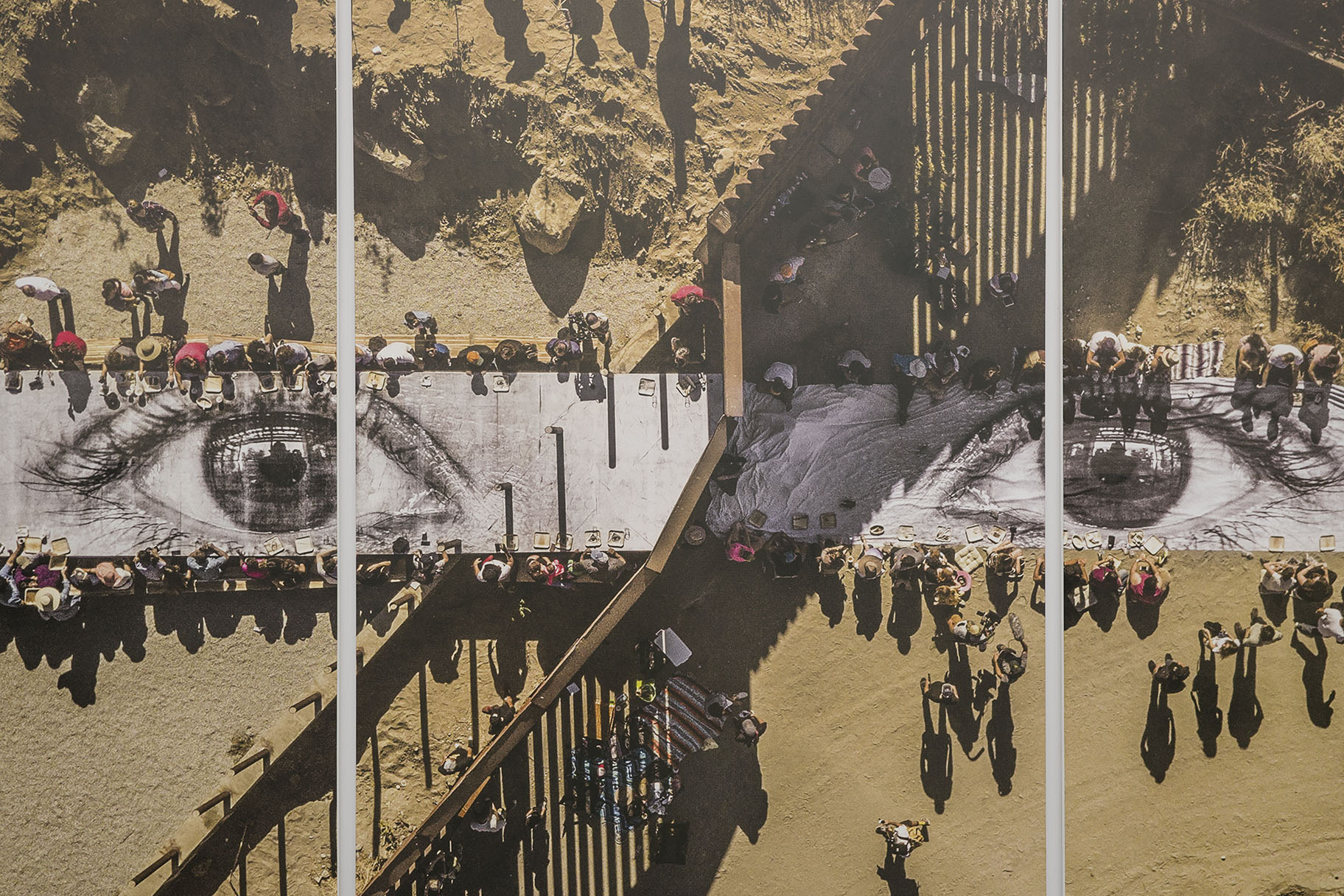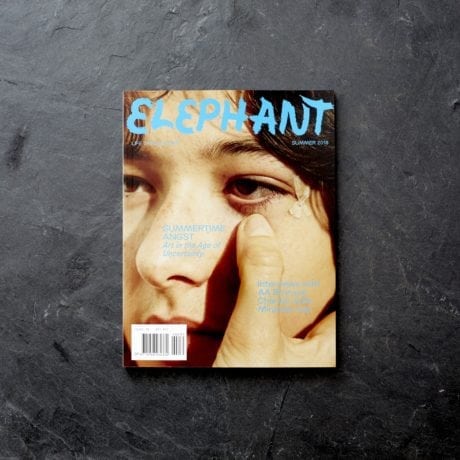
In September of last year a gigantic image of a toddler emerged at the US-Mexico border, where it divides Tecate and San Diego County. This huge portrait of a young boy called Kikito, which loomed over a wall that carries so much hostile symbolism and rendered it mildly absurd, was created by artist JR, who is known for paste-up projects that have taken place in many locations throughout the world. They often reveal the humanity behind communities which are disrupted by conflict or marginalized.
The piece garnered colossal attention, with international media, locals and tourists praising it as a significant and poignant statement in light of Trump’s attempts to dismantle the DACA (Deferred Action for Childhood Arrivals) programme. However, it wasn’t the only piece of art installed at the wall. At the culmination of the project, JR gathered people together for a “giant picnic” that spanned both sides of the border. Guests, including undocumented immigrants, were invited to share food at a massive dinner table adorned with a cloth that, when viewed from above, pictured the eyes of a “Dreamer” (the name afforded to undocumented people who came to the US as children).
“They could have arrested someone or caused trouble, but no one ever had any problems. Which means that they secretly endorse the project”
Given the fraught nature of migration politics, the artist assumed that this meal would be dismantled by border control, but he was pleasantly surprised by the response, with some agents even sharing tea or snapping photos with people on the other side of the barrier: “They could have arrested someone or caused trouble, but no one ever had any problems. Which means that they secretly endorse the project,” the artist says in our current issue.
Many of the guests attended knowing there was a real danger that they could be arrested and deported, including the Dreamer whose eyes were depicted on the cloth. She felt it was too important a moment to miss. “It gives me hope,” says JR. “You can think about how terrible this situation is—of course it is, and it’s very intense—but there are human beings behind this who understand the complexity of these situations. Only certain art projects like this can reflect that. It’s not just my response, it’s thousands of people, so I can’t just be getting lucky! Maybe people are a little more open-minded than we think.”
The collaborative nature of this picnic was more transient but perhaps more powerful than the Kikito portrait, because it was made possible by the people whose everyday lives are affected by migration politics and divisive rhetoric. The act of sharing a meal is always a powerful force for community and friendship, but in this instance, a seemingly everyday act became a defiant political statement.
You can read more about JR in his interview with Holly Black in issue 35
BUY ISSUE 35





